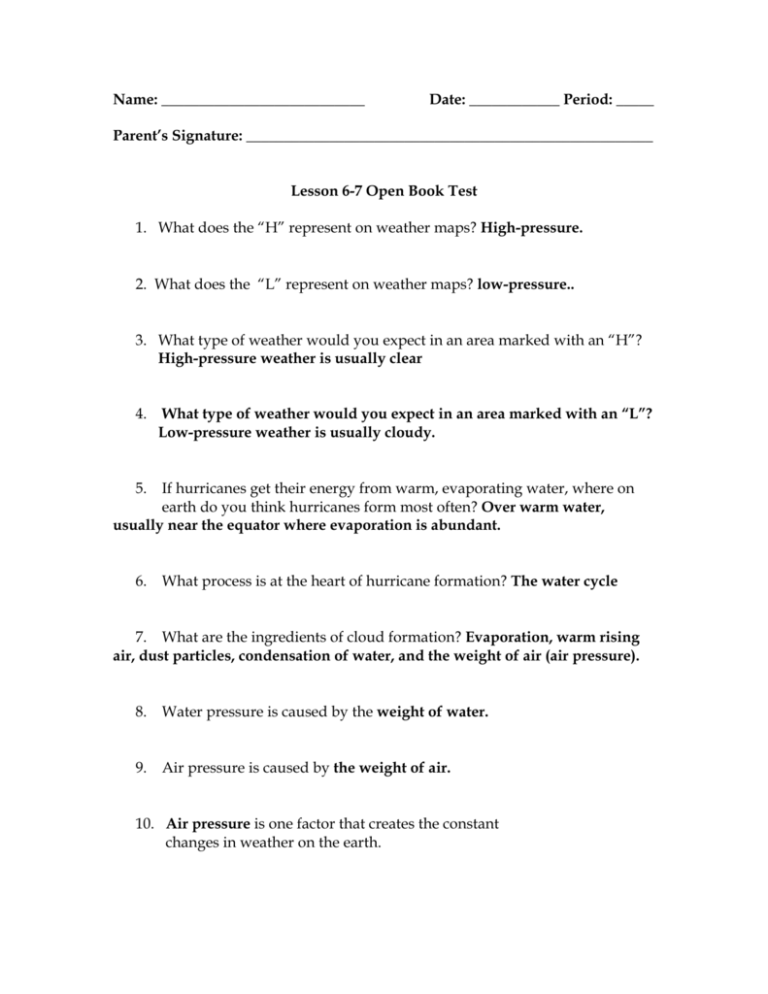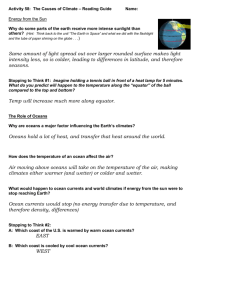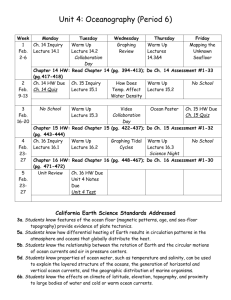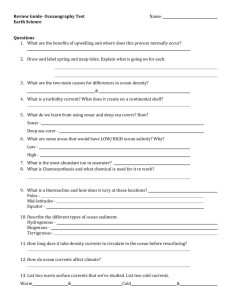Name - Images
advertisement

Name: ___________________________ Date: ____________ Period: _____ Parent’s Signature: ______________________________________________________ Lesson 6-7 Open Book Test 1. What does the “H” represent on weather maps? High-pressure. 2. What does the “L” represent on weather maps? low-pressure.. 3. What type of weather would you expect in an area marked with an “H”? High-pressure weather is usually clear 4. What type of weather would you expect in an area marked with an “L”? Low-pressure weather is usually cloudy. 5. If hurricanes get their energy from warm, evaporating water, where on earth do you think hurricanes form most often? Over warm water, usually near the equator where evaporation is abundant. 6. What process is at the heart of hurricane formation? The water cycle 7. What are the ingredients of cloud formation? Evaporation, warm rising air, dust particles, condensation of water, and the weight of air (air pressure). 8. Water pressure is caused by the weight of water. 9. Air pressure is caused by the weight of air. 10. Air pressure is one factor that creates the constant changes in weather on the earth. 11. What is a barometer? An instrument that detects and measures air pressure changes. 12. The waters of the ocean move in streams called currents. 13. List 5 factors that help form ocean currents: Heat from the sun, wind, salinity, land masses acting as barriers, and the rotation of the earth. 14. What are major forces that drive ocean currents? Temperature and wind 15. What do ocean currents do? They dissolve oxygen from the atmosphere and bring minerals up to the surface, where tiny floating plants can use them. They also help move heat around the globe. 16. Who made some of the earliest studies of ocean currents? Benjamin Franklin 17. What did he discover? He discovered how sailors could use thermometers to guide their ships into the current or out of it 18. How does temperature affect the way water moves? The hot water is less dense so it rises. The cool water is more dense so it sinks. 19. What are trade winds? Winds that blow from the east to the west across the tropical Pacific Ocean. 20. What is El Nino? An unusually warm flow of surface water. There is no wind to push the warm water westward, and the cold water near the Americas cannot rise to the surface. 21. What produces surface ocean currents? Wind blowing over the oceans. 22. What do surface ocean currents do? They transfer heat from tropical areas near the equator to Polar Regions. 23. What is the Gulf Stream? A tremendous warm-water current that flows northward along the East Coast of the US. It carries huge amounts of warm tropical water into areas farther north. 24. Surface ocean currents have a major effect on global climate 25. From the past 2 lessons, do water and air move the same way? Explain. Cold water and cold air sink. Hot water and hot air rise. Bonus Questions: Each question is worth 1 point 1. How fast does the Earth move around the Sun? a. 8,400 mph b. 31,650 mph c. 67,000 mph 2. What gas makes up 78 % of the atmosphere? a. Nitrogen b. Hydrogen c. Oxygen 3. Which state has the most earthquakes? a. California b. Washington c. Alaska 4. What does an agronomist study? a. Trees and bushes b. Precipitation and runoff c. Soil and agriculture











